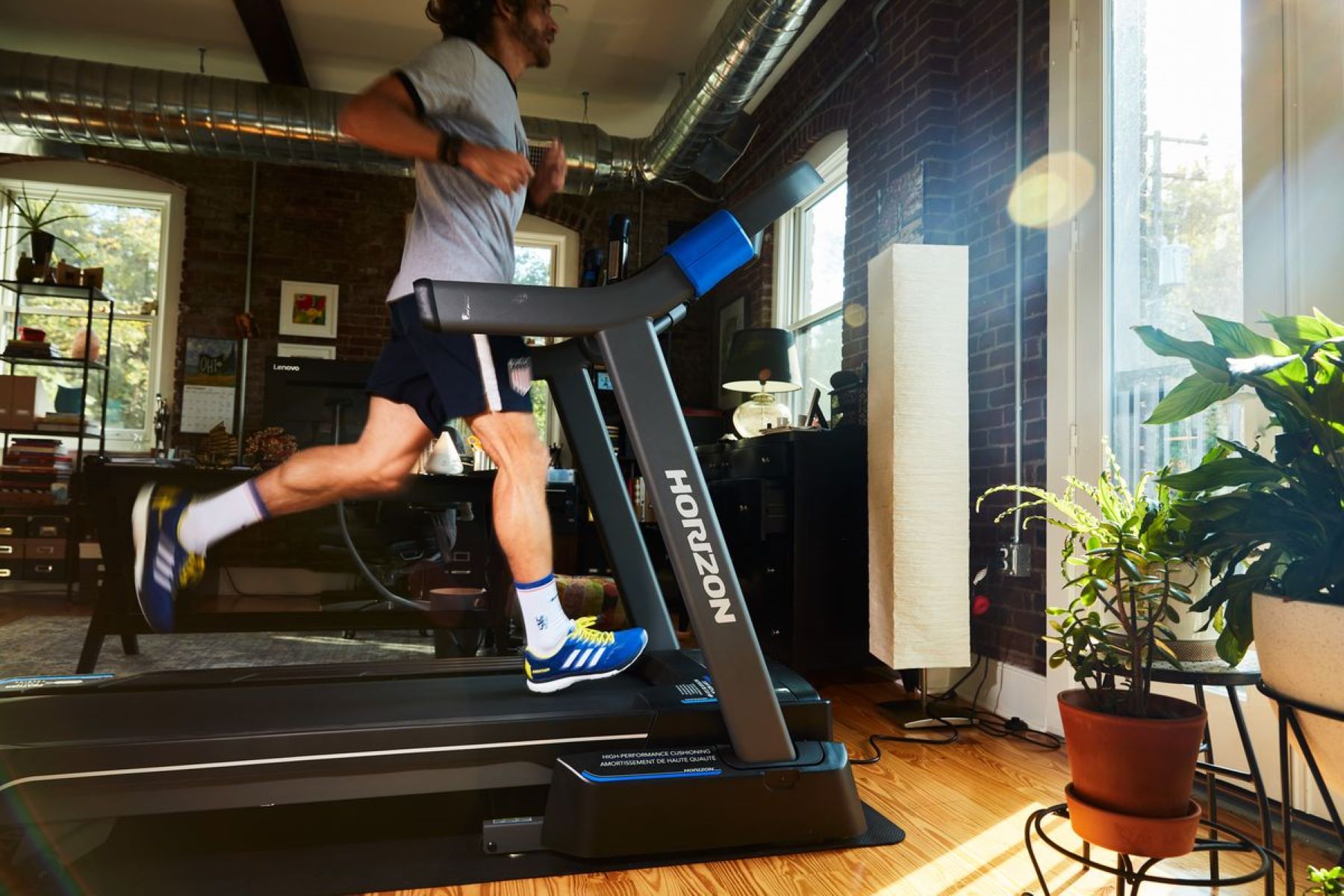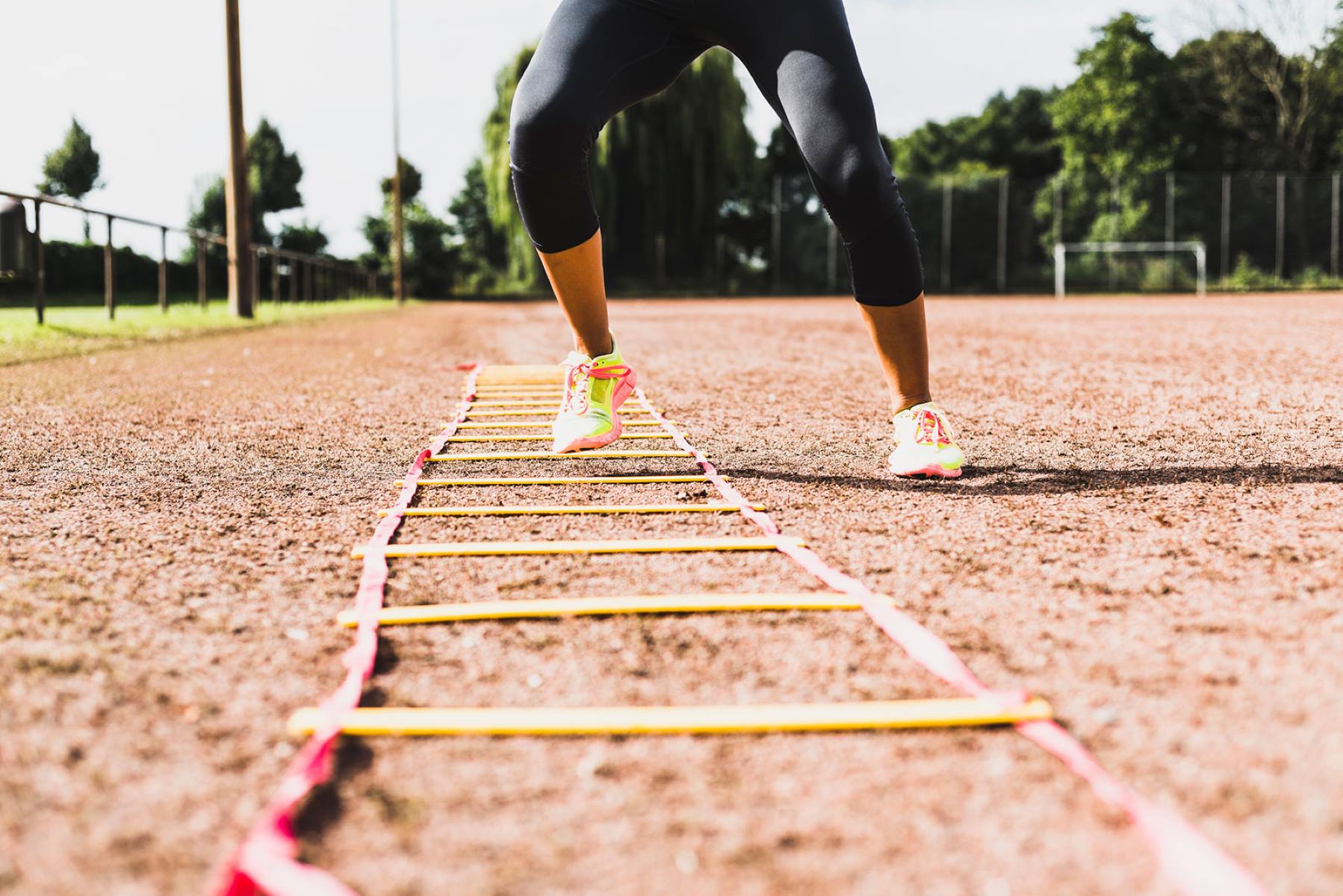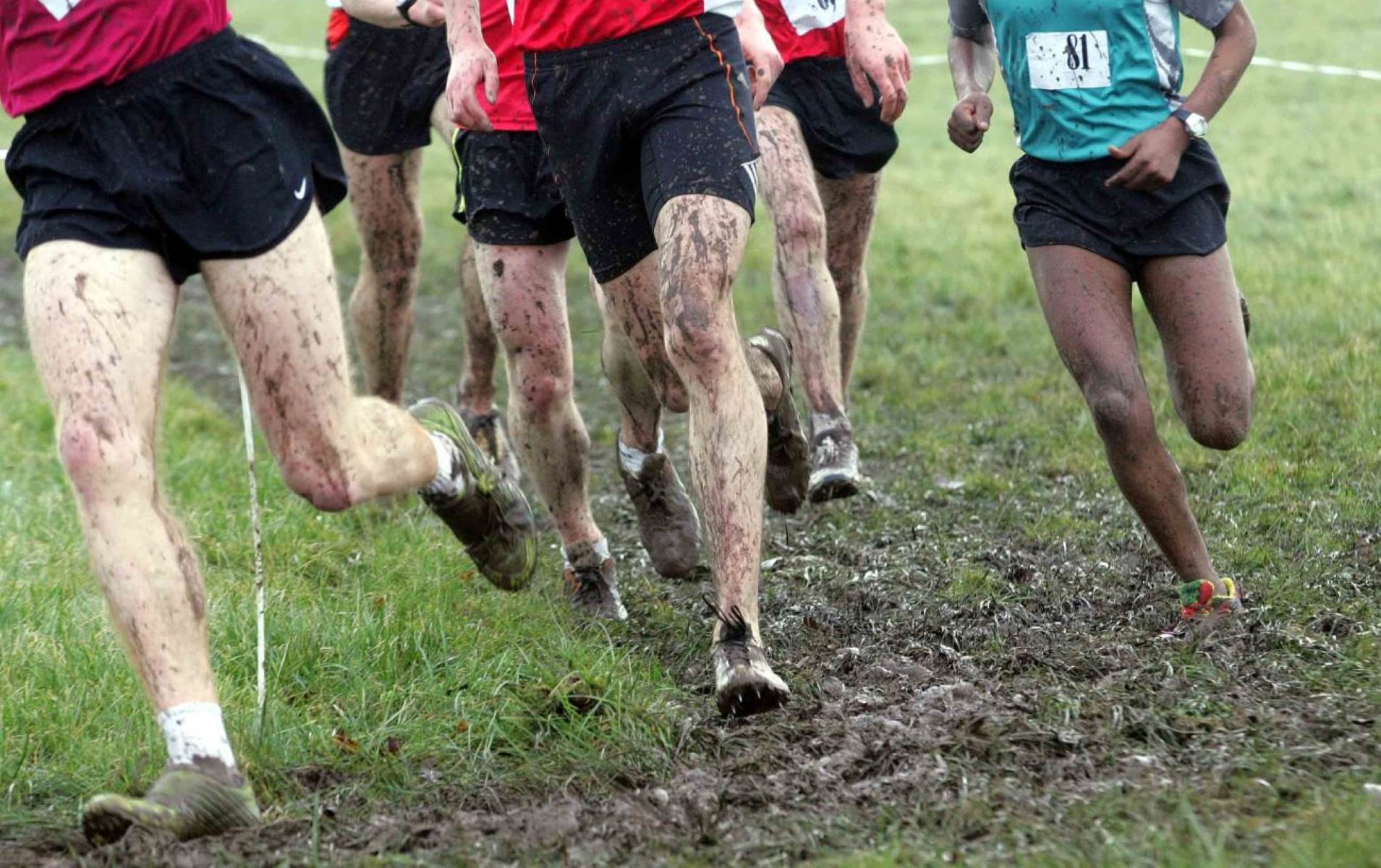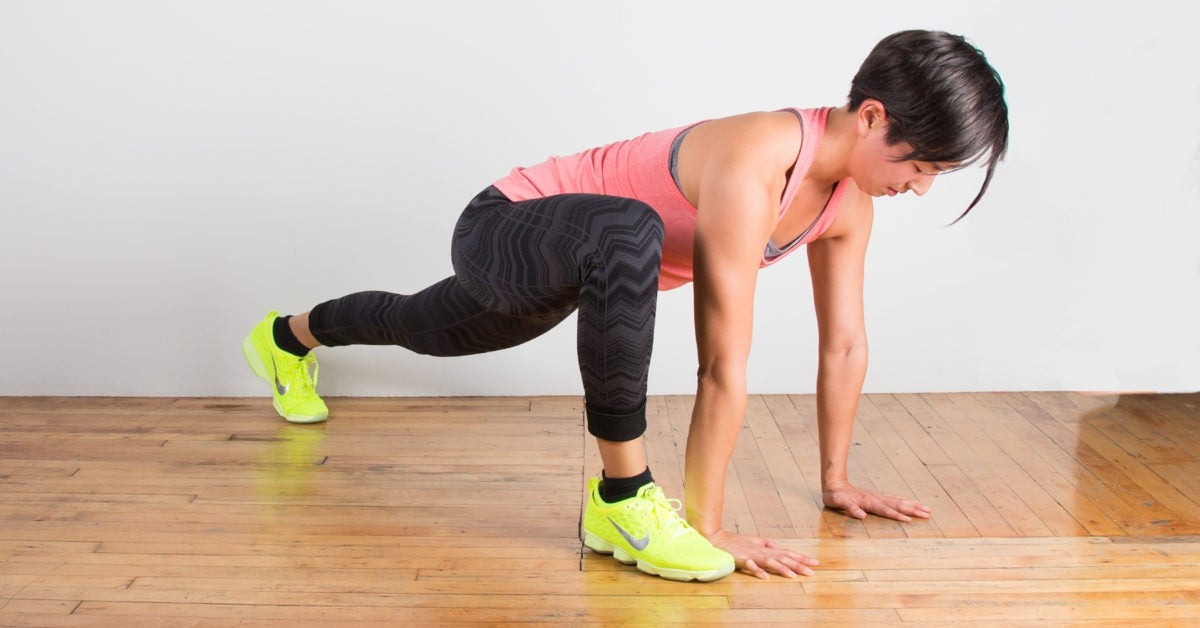Home>Misc>Featured>What Are The Ideal Rest Periods During A Repeated Sprint Workout


Featured
What Are The Ideal Rest Periods During A Repeated Sprint Workout
Modified: October 26, 2023
Learn about the ideal rest periods in a featured repeated sprint workout. Discover the key characteristics for optimal recovery and performance.
Introduction
When it comes to maximizing the effectiveness of your workouts, rest periods play a crucial role. Especially in a repeated sprint workout, the way you structure and characterize your rest periods can have a significant impact on your performance and overall results.
Rest periods are not merely a break between sets; they are an essential component of your training regimen. Rest periods allow your body to recover and replenish energy stores, ensuring that you can maintain intensity and effort throughout the workout.
In a repeated sprint workout, where you perform a series of short, intense sprints with minimal rest between each set, the characterization of your rest periods becomes even more important. It determines the level of recovery you achieve, impacting your ability to maintain power and speed during subsequent sprints.
Understanding how to effectively structure and characterize your rest periods can make a significant difference in your performance and overall training outcomes. From the duration of the rest periods to the intensity level and the type of rest utilized, there are several factors to consider. By optimizing these factors, you can enhance your workout’s efficiency and ultimately achieve your fitness goals.
This article will delve into the various aspects of rest periods in a repeated sprint workout. We will explore the factors to consider when characterizing rest periods, the optimal rest period duration, the different types of rest (active vs. passive), and the impact of rest periods on performance. Finally, we will provide strategies and recommendations for designing effective rest periods in your repeated sprint workouts.
Importance of rest periods in repeated sprint workouts
Rest periods play a crucial role in the effectiveness of repeated sprint workouts. These workouts typically involve short bursts of intense exertion followed by brief recovery periods. The purpose of the rest periods is to allow the body to recover and prepare for the next sprint.
The importance of rest periods lies in their ability to replenish energy stores and remove metabolic byproducts, such as lactic acid, that accumulate during high-intensity exercise. When you perform repeated sprints without adequate rest, fatigue sets in quickly, and your performance declines. By incorporating rest periods, you allow your muscles to recover and regain their optimal function, allowing for better performance in subsequent sprints.
One key benefit of incorporating rest periods is the restoration of ATP (adenosine triphosphate), the primary energy source for muscle contractions. During intense exercise, ATP stores rapidly deplete. Rest periods give your muscles a chance to replenish ATP and other energy substrates, ensuring you have the necessary fuel to maintain power and speed throughout the workout.
Moreover, rest periods allow for the removal of metabolic waste products. During intense exercise, your body produces lactate as a byproduct of anaerobic metabolism. Build-up of lactate can lead to muscle fatigue and decreased performance. By incorporating rest periods, you allow your body to clear accumulated lactate and other waste products, helping to delay fatigue and optimize performance.
Another crucial role of rest periods is the prevention of overuse injuries. Intense exercise places a significant strain on muscles, joints, and connective tissues. Without sufficient rest, these structures can become overwhelmed, leading to overuse injuries, such as stress fractures or tendonitis. Adequate rest periods help prevent such injuries by allowing time for repair and recovery.
In summary, rest periods in repeated sprint workouts are essential for several reasons. They allow for the replenishment of energy stores, removal of metabolic waste products, prevention of fatigue, and reduction of the risk of overuse injuries. By strategically incorporating rest periods, you can optimize your performance, boost your endurance, and achieve your fitness goals more effectively.
Factors to consider when characterizing rest periods
Characterizing rest periods in repeated sprint workouts involves considering various factors that can affect the effectiveness of your training. By understanding and optimizing these factors, you can design rest periods that promote optimal recovery and maximize your performance. Here are some key factors to consider:
- Work-to-rest ratio: The work-to-rest ratio refers to the ratio of time spent working (performing the sprints) to the time spent resting. This ratio can vary depending on your training goals and the intensity of the workout. For example, a common work-to-rest ratio for repeated sprint workouts is 1:2, which means that for every sprint performed, there is twice as much time allocated for rest.
- Intensity of the sprints: The intensity of your sprints will dictate the length and type of rest periods needed. Higher intensity sprints may require longer rest periods to allow for sufficient recovery, while lower intensity sprints may require shorter rest periods.
- Training experience and fitness level: Your training experience and fitness level will play a role in determining the duration and intensity of rest periods. Beginners may require longer rest periods to recover adequately, while more advanced individuals may be able to tolerate shorter rest intervals.
- Individual recovery capacity: The rate at which you recover can vary from person to person. Some individuals may require longer rest periods to fully recover, while others may be able to recover more quickly. Pay attention to how your body responds to different rest periods and adjust accordingly.
- Training goals: Your specific goals for the repeated sprint workout will also influence how you characterize the rest periods. If your emphasis is on building endurance, you may opt for shorter rest periods to challenge your cardiovascular system. On the other hand, if your focus is on developing speed and power, longer rest periods may be necessary to ensure optimal performance in each sprint.
It’s important to note that these factors are not mutually exclusive and should be considered in conjunction with one another. Experimentation and monitoring of your own responses to different rest period characteristics will help you determine what works best for your individual needs and goals.
By carefully considering these factors when characterizing your rest periods, you can create a training plan that maximizes your performance, prevents overexertion or injury, and helps you achieve your desired outcomes.
Optimal duration of rest periods
Determining the optimal duration of rest periods in repeated sprint workouts is crucial for achieving the desired training effects and maximizing performance. The duration of rest periods can vary depending on several factors, including the intensity of the sprints, individual fitness level, and training goals.
In general, the duration of rest periods should be long enough to allow for adequate recovery, but not so long that it compromises the training stimulus. Research suggests that rest periods ranging from 30 seconds to 3 minutes are commonly employed in repeated sprint workouts. The specific duration will depend on various factors and should be tailored to meet individual needs.
When considering the optimal duration of rest periods, it is important to take into account the intensity of the sprints. Higher intensity sprints typically require longer rest periods to allow for sufficient recovery. This allows the body to clear the build-up of lactate and replenish energy stores to ensure optimal performance in subsequent sprints.
Individual fitness level and training goals also play a role in determining the duration of rest periods. Beginners or individuals with lower fitness levels may require longer rest intervals to recover adequately, while more advanced individuals may be able to tolerate shorter rest periods. It is essential to listen to your body and make adjustments accordingly to avoid overexertion or injury.
Training goals also influence the optimal duration of rest periods. If your focus is on building endurance, shorter rest periods may be implemented to challenge your cardiovascular system and stimulate adaptations. Conversely, if your aim is to develop speed and power, longer rest periods may be necessary to ensure maximal effort and performance in each sprint.
Consider implementing a trial and error approach to find the optimal duration of rest periods for your individual needs. Start with a moderate rest interval and gradually adjust based on your perceived recovery and performance. Keep in mind that individual responses may vary, so it is important to pay attention to your body’s signals and make adjustments accordingly.
In summary, the optimal duration of rest periods in repeated sprint workouts depends on the intensity of the sprints, individual fitness level, and training goals. Finding the right balance between sufficient recovery and maintaining training stimulus is key. By closely monitoring your performance and listening to your body’s needs, you can tailor the rest period duration to maximize your training outcomes.
Rest period intensity
When it comes to rest periods in repeated sprint workouts, the intensity of the rest periods is an often-overlooked factor that can have a significant impact on your performance and recovery. Rest period intensity refers to the level of activity or relaxation during the designated rest periods.
Traditionally, rest periods were characterized by complete rest or sedentary activities, allowing the body to fully recover before the next sprint. However, recent research has shown that incorporating low-intensity activities during rest periods can have several benefits.
Active recovery, which involves engaging in low-intensity exercises or movements during rest periods, has been found to enhance the overall recovery process. This can be achieved through activities such as light jogging, walking, or dynamic stretching. Active recovery increases blood flow and helps to remove metabolic waste products, such as lactate, more efficiently than complete rest.
By keeping your body in a state of low-level activity, active recovery promotes quicker muscle recovery and reduces the onset of muscle soreness. It also helps to maintain a higher body temperature, which can aid in muscle flexibility and improve subsequent performance in sprints.
On the other hand, some individuals may benefit from incorporating complete rest periods, especially if they have high levels of fatigue or are aiming for maximum intensity in each sprint. Complete rest allows for full replenishment of energy stores and can be particularly beneficial for individuals who struggle with recovery or have high training loads.
The decision between active recovery and complete rest during rest periods depends on various factors, including individual fitness levels, training goals, and the specific demands of the workout. It is important to assess your own responses and experiment with different approaches to determine what works best for you.
It is worth noting that the intensity of rest periods should still be considered as a relative measure. Even during active recovery, the intensity should be significantly lower than that of the sprints to ensure adequate rest. The goal is to facilitate recovery without overtaxing the body.
In summary, the intensity of rest periods in repeated sprint workouts can be either active or complete rest. Active recovery has been shown to improve the recovery process by promoting blood flow and reducing muscle soreness. Complete rest is valuable for individuals who require maximum recovery between sprints. It is essential to consider individual factors and experiment to find the optimal rest period intensity for your own training needs and goals.
Types of rest periods: active vs. passive
In repeated sprint workouts, rest periods can be further classified into two main types: active and passive. Each type of rest period offers unique benefits and considerations, allowing you to tailor your training approach to your specific goals and needs.
Active rest periods: Active rest periods involve engaging in low-intensity activities or movements during the rest interval between sprints. These activities can include light jogging, walking, dynamic stretching, or even mobility exercises. The key is to maintain a level of activity that keeps the body in motion without causing excessive fatigue or hindering recovery.
The benefits of active rest periods are numerous. First, engaging in low-intensity activities during rest periods can help to maintain blood flow and promote the removal of metabolic byproducts, such as lactate, more efficiently than complete rest. This improved clearance of waste products can aid in recovery and reduce muscle soreness, allowing for better performance in subsequent sprints.
Active rest periods also help to keep the body warmed up and prepared for the next sprint. By staying active, you can maintain muscle flexibility and joint mobility, reducing the risk of injury and improving overall sprint performance.
Passive rest periods: Passive rest periods, on the other hand, involve complete rest or sedentary activities during the designated rest intervals. This means avoiding any form of physical activity and allowing the body to rest and recover fully between sprints.
Passive rest periods offer several benefits as well. By abstaining from physical activity, passive rest allows for maximum recovery of energy stores, replenishment of ATP levels, and removal of metabolic waste products. This can be particularly beneficial for individuals with higher training loads or those who require more time to recover between sprints.
Passive rest periods may also be preferable for athletes who prioritize maximum intensity in each sprint. Complete rest allows for a more complete recovery, ensuring that each sprint can be performed at peak power and speed.
When choosing between active and passive rest periods, consider your individual goals, training intensity, and recovery capacity. Active rest periods are generally beneficial for facilitating recovery, maintaining blood flow, and reducing muscle soreness. On the other hand, passive rest periods are valuable for maximizing recovery, particularly for individuals with high training loads or those aiming for maximum intensity in each sprint.
It is worth noting that the decision of whether to use active or passive rest periods can also be influenced by personal preference and the specific demands of the workout. Experiment with both types of rest periods to determine which approach works best for you and your training goals.
In summary, active and passive rest periods offer distinct advantages for repeated sprint workouts. Active rest periods promote blood flow, support recovery, and maintain muscle flexibility, while passive rest periods allow for maximum recovery and replenishment of energy stores. Consider your goals, training intensity, and recovery capacity to determine the type of rest period that best suits your needs.
The role of individual fitness levels in rest periods
When it comes to rest periods in repeated sprint workouts, individual fitness levels play a significant role in determining the optimal duration and intensity of the rest intervals. Fitness levels can vary greatly from person to person, and tailoring the rest periods to each individual’s needs is crucial for maximizing performance and preventing overexertion or injury.
Individual fitness levels impact how quickly an individual can recover between sprints. Fitter individuals generally have a higher aerobic capacity, allowing them to clear metabolic byproducts more efficiently and recover faster than less fit individuals. As a result, fitter individuals may require shorter rest intervals to achieve adequate recovery between sprints.
On the other hand, individuals with lower fitness levels or beginners may have a longer recovery time between sprints. Their bodies may take more time to replenish energy stores, clear lactate, and recover neuromuscular function.
The ability to tolerate shorter rest periods also depends on an individual’s training status. Experienced individuals who have been consistently performing repeated sprint workouts or engaging in high-intensity exercise may have a greater ability to recover quickly between sprints compared to those who are new to this type of training.
It is important to note that while fitness levels play a role in determining the duration of rest periods, they should not be the sole determinant. Other factors, such as the intensity of the sprints, the specific training goals, and individual recovery capacity, should also be considered.
Furthermore, individual fitness levels can change over time, and rest intervals may need to be adjusted accordingly. As individuals become fitter and adapt to repeated sprint workouts, they may find that they are able to tolerate shorter rest intervals and recover more quickly between sprints.
It is essential to listen to your body and pay attention to how you respond to different rest periods. If you find that you are consistently struggling to recover or perform optimally with the current rest intervals, consider lengthening the duration of the rest periods to allow for better recovery.
In summary, individual fitness levels play a crucial role in determining the optimal duration of rest intervals in repeated sprint workouts. Fitter individuals generally require shorter rest intervals, while individuals with lower fitness levels may need longer recovery times between sprints. However, other factors, such as training intensity, goals, and individual recovery capacity, should also be taken into consideration when designing rest periods. Monitoring your own responses and making adjustments accordingly will help ensure that the rest periods are appropriately tailored to your fitness level and maximize your performance.
The impact of rest periods on performance
The rest periods utilized in repeated sprint workouts have a significant impact on overall performance. Understanding how rest intervals affect performance can help you design training programs that optimize results and enhance your athletic abilities.
One of the primary impacts of rest periods on performance is their influence on energy replenishment. During high-intensity exercise, energy stores, such as ATP and glycogen, become depleted. Rest intervals allow for the replenishment of these energy sources, ensuring that you have the fuel necessary to maintain power and speed in subsequent sprints.
Additionally, rest intervals play a vital role in reducing fatigue. Intense exercise leads to the accumulation of metabolic byproducts, such as lactate. These byproducts can hinder muscle function and contribute to the onset of fatigue. Rest periods provide an opportunity for the body to clear lactate and other waste products, minimizing fatigue and allowing for more efficient muscle contractions in the following sprints.
The impact of rest periods on performance also extends to neuromuscular recovery. Intense exercise places a significant demand on the neuromuscular system, leading to a decrease in motor unit recruitment and performance. Adequate rest intervals allow for the recovery of the neuromuscular system, ensuring that you can generate maximal force and power in each sprint.
Furthermore, rest periods influence the overall quality of movement. When fatigue sets in, movement patterns can deteriorate, leading to decreased efficiency and increased risk of injury. By incorporating appropriate rest periods, you allow for the restoration of proper movement mechanics, enhancing performance and reducing the likelihood of technique-related injuries.
The length of rest periods also affects the body’s cardiovascular response. Shorter rest intervals, especially when paired with active recovery, can challenge the cardiovascular system and improve endurance capacity. On the other hand, longer rest periods allow for cardiovascular recovery, ensuring that you can perform each sprint with maximal effort and intensity.
It is essential to consider the interplay between performance goals and rest periods. If your focus is on developing speed and power, longer rest intervals may be necessary to ensure maximal effort and performance in each sprint. However, if your emphasis is on building endurance, shorter rest intervals can create a more challenging cardiovascular stimulus.
Lastly, rest periods have a psychological impact on performance. Taking adequate breaks between sprints allows for mental recovery and helps to maintain focus and motivation throughout the workout. This psychological component is crucial for sustained performance and overall workout enjoyment.
In summary, rest periods have a significant impact on performance in repeated sprint workouts. They affect energy replenishment, reduce fatigue, aid in neuromuscular recovery, enhance movement quality, influence cardiovascular responses, and contribute to psychological well-being. By understanding the influence of rest periods, you can design training programs that optimize your performance and help you reach your athletic goals.
Strategies for designing rest periods in repeated sprint workouts
Designing effective rest periods in repeated sprint workouts requires a thoughtful approach that considers various factors such as training goals, individual fitness levels, and desired outcomes. By implementing the following strategies, you can optimize your rest periods and maximize your performance:
- Consider the work-to-rest ratio: Determine the ideal ratio of work (sprints) to rest in your training program. A typical starting point could be a 1:2 ratio, meaning the rest interval is twice as long as the sprint duration. Adjust this ratio based on your fitness level, training intensity, and specific goals.
- Individualize rest periods: Tailor the duration and intensity of rest periods to your individual needs and fitness level. Beginners and individuals with lower fitness levels may require longer rest periods to fully recover, while more advanced individuals may need shorter intervals to maintain intensity.
- Experiment with active and passive rest: Test out both active rest periods (low-intensity movements or exercises) and passive rest periods (complete rest) to determine what works best for you. Some individuals may benefit from incorporating active recovery to promote blood flow and clearance of metabolic waste products, while others may prefer complete rest for optimal recovery.
- Gradually decrease rest intervals: As your fitness level improves, gradually decrease the duration of rest intervals to challenge yourself and adapt to greater work capacity. However, be mindful not to reduce rest periods too quickly, as this can lead to inadequate recovery and compromised performance.
- Monitor performance and recovery: Pay close attention to how your body responds to different rest periods. Track your sprint times, perceived exertion, and overall fatigue levels to determine if rest intervals are appropriate for maintaining performance throughout the workout.
- Periodize rest periods: Consider implementing a periodization approach to rest periods, varying the duration and intensity throughout your training cycles. This allows for the manipulation of training stimuli and helps prevent plateaus in performance.
- Listen to your body: Above all, listen to your body’s signals and adjust rest periods as needed. If you consistently struggle to recover or notice a decline in performance, consider lengthening rest intervals or incorporating additional recovery strategies such as foam rolling or stretching.
Remember, there is no one-size-fits-all approach to designing rest periods in repeated sprint workouts. It’s important to experiment, monitor, and adjust based on your individual needs and response. By implementing these strategies, you can optimize your rest periods to support your training goals, enhance recovery, and improve overall performance.
Conclusion
Rest periods in repeated sprint workouts play a crucial role in maximizing performance and achieving training goals. By carefully characterizing and designing rest intervals, athletes can optimize recovery, replenish energy stores, reduce fatigue, and enhance overall performance.
The duration and intensity of rest periods should be tailored to individual fitness levels, training goals, and the demands of the workout. Fitness level is a significant factor in determining the duration of rest intervals, with fitter individuals generally requiring shorter rest periods. Active rest periods, such as light jogging or dynamic stretching, promote blood flow and facilitate the removal of metabolic byproducts, while passive rest periods allow for complete recovery.
The impact of rest periods on performance is multifaceted, influencing energy replenishment, neuromuscular recovery, movement quality, cardiovascular responses, and psychological well-being. Finding the appropriate balance between rest and work is essential to prevent overtraining and optimize performance.
Strategies for designing rest periods include considering the work-to-rest ratio, individualizing rest intervals, experimenting with active and passive rest, gradually decreasing rest intervals as fitness improves, monitoring performance and recovery, periodizing rest periods, and listening to the body’s signals.
Incorporating these strategies and paying attention to individual responses will help athletes tailor their rest periods to their specific needs and goals, leading to improved performance, better endurance, and reduced risk of overexertion or injury.
It’s important to remember that rest periods are not mere breaks in between sprints, but rather an integral part of the training process. By optimizing rest intervals and understanding their impact, athletes can maximize the effectiveness of their repeated sprint workouts and achieve their desired outcomes.









